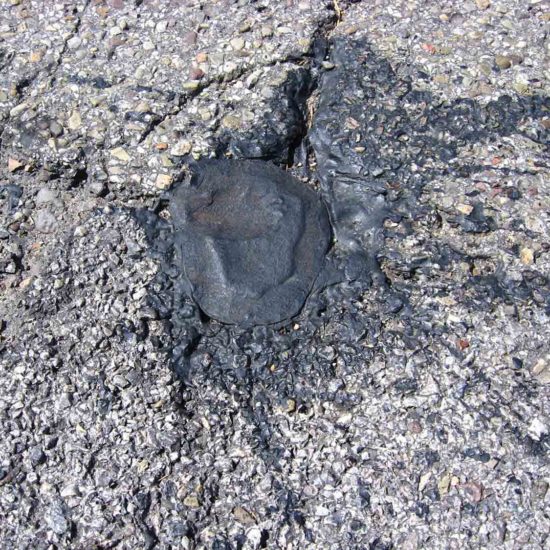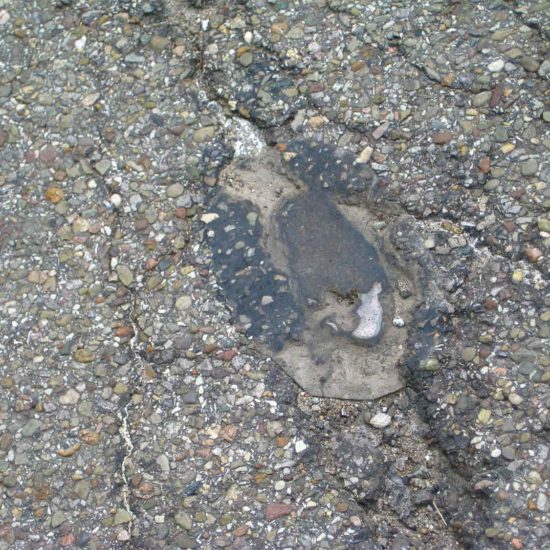Between Dog & Wolf
bronze, asphalt, asphalt filler, roofing paper
2007-2010
In 2007, I cast a series of bronze “puddles” with coyote tracks imprinted in their surfaces. For several years I periodically installed these in small potholes in asphalt streets in urban environments – mostly in Pittsburgh, but also in several other US cities as I traveled. The process emulates the fabrication of the mosaic “Toynbee Tile” installations, in that the embedded object (in this case a hunk of bronze) is initially hidden by tar paper and only becomes visible after the covering is worn away by the continual grind of motorized traffic. Asphalt crack filler serves as the bonding agent. Since asphalt is always in flux, it tends to accept less pliable materials, particularly metals: by the time the tracks become visible they have already become a part of the street.
In working on this project, I was not only parsing through my ongoing fascination with the modern spread of coyotes across North America, but also the idea that, since bronze does not break down much over thousands of years, I would in some sense be generating contemporary fossil records of prevalent North American wildlife – albeit wrought in man-made materials. That the bronze would need automotive traffic to provide the finishing polish was really the icing on the cake.

Three stages of the work: initial cleaned bronze, piece with tar paper and asphalt adhesive ready for installation, bronze piece recovered from four years installed in asphalt road.
As exhibited in “Checks & Balances” (SPACE, Pittsburgh, 2016, curated by Murray Horne).
Date
2010
Category
Landscape & Site-Specific








